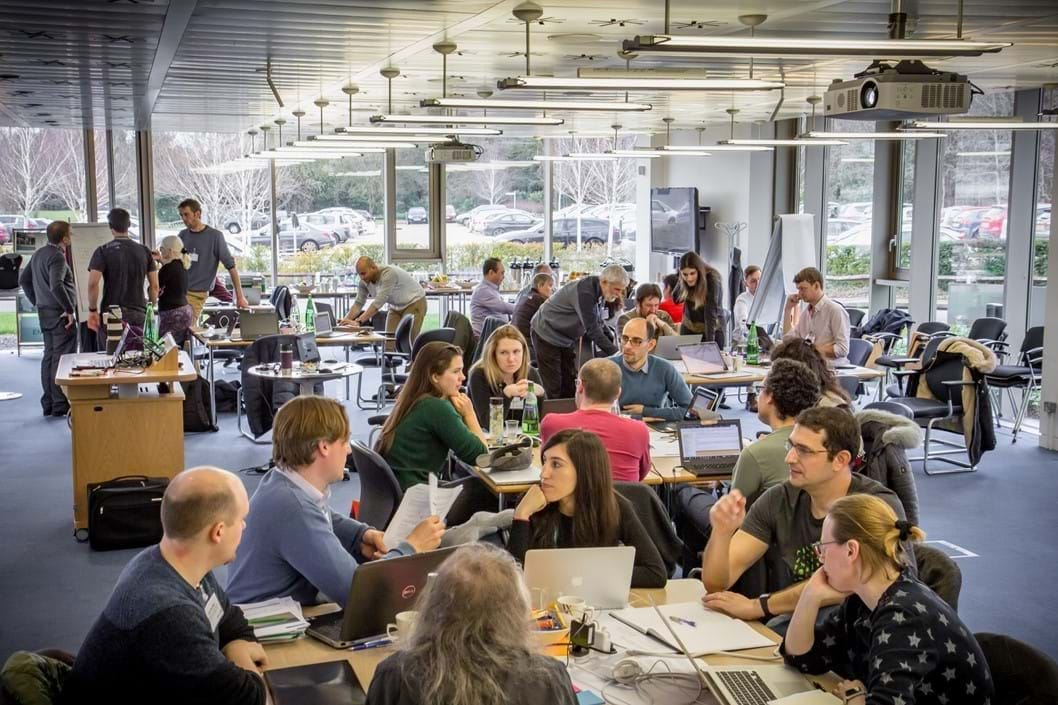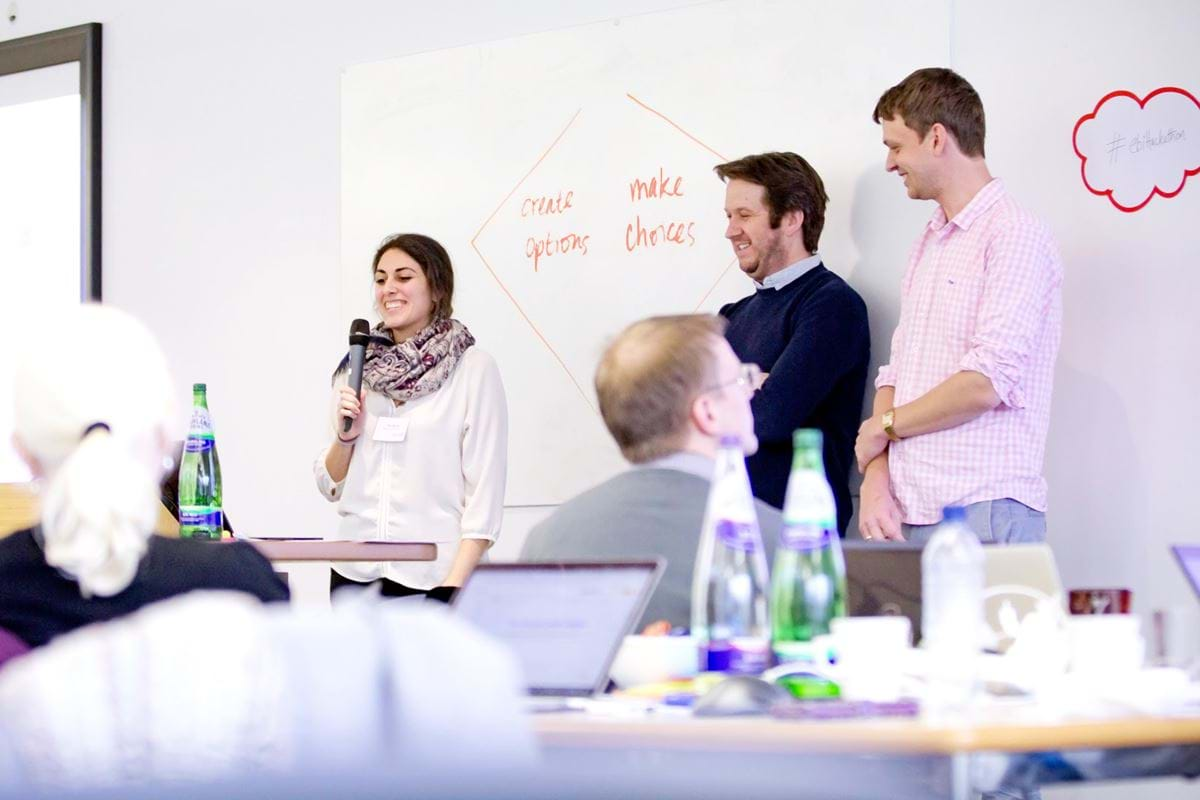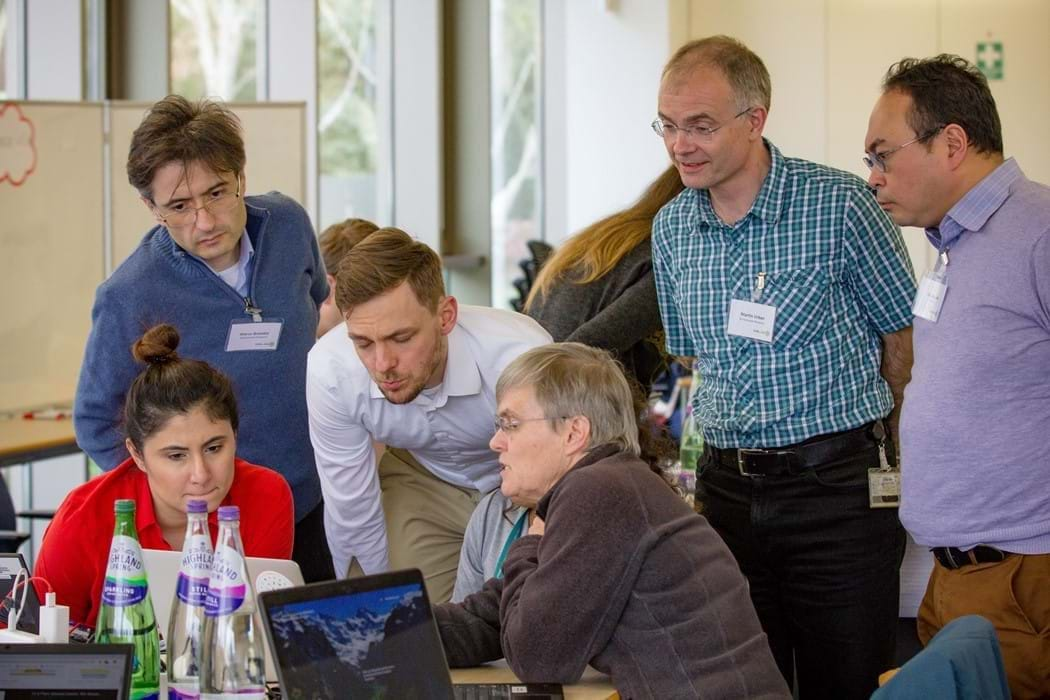Helping agrifood data experts to imagine and develop solutions to real challenges
3 minute read
Bringing some design thinking to the challenges of growing crops, our Francis attended the EBI's agrifood data hack and shared out our typical project approaches, to help participants come up with the best solutions.
The European Bioinformatics Institute (EBI) sits on the same campus as the Nexer Cambridge office. The EBI’s Industry Programme continues to diversify the way that scientists from big companies can learn about how to use publicly available biological datasets.

We were very glad to be invited to help with a hack event focused on agrifood data – that is, data related to crops, pests, drought, weather, and so on – organised by the Industry Programme’s Effie Mutasa-Gottgens. I have a background (albeit distant!) in environmental science, land use, and biodiversity, so I was only too pleased to get involved. For this event, I was asked to introduce some of the thinking and practices that we would commonly use in design projects.
Associated to that overall theme were two main challenges: one about crop yield and quality – how do plant breeders develop the right crop varieties, to give farmers good options in the face of climate change? and the second focused on crop protection – how do we deal with increasing plant pest and disease resistance to existing chemicals and find new solutions and safeguard the wider environment at the same time?
Approaching hack challenges like we would a design challenge
Hack events like this centre around teams of people getting hold of data from different sources, finding opportunities to integrate it, and then representing the output in ways that address a particular challenge or focus.
Forming teams and getting started can sometimes be tricky, though, and we know from our design practice that leaping straight into a solution can easily cause problems, later on.
Providing some structure and guidance around this was something that the EBI organisers wanted our help with. Organiser and senior scientific officer, Effie Mutasa-Gottgens told us:
This was our first AgriFood data hackathon, we already knew that the public data space was going to be challenging, and we needed our teams to cover the widest possible range of knowledge domains.
We gathered participants encompassing a broad spectrum of skills in data science, plant science, biology, chemistry and agriculture. I knew that for best results, we needed to mix them up in diverse teams that took them out of their comfort zones. We did it - but only with the skillful help and guidance from Francis.
He brought to life my vague ideas of how a hackathon team should be structured and function. The outputs are testament to this achievement. We accomplished results that some experts previously considered impossible.
Matt Shearer, from Data Language, was also there to encourage participants to generate ideas and solutions that were related to the hack theme, but not one of the two main challenges.

As well as some general tips for the participants (like, don’t leave it until the last minute to prepare for your demo!), there were two pieces of advice I offered; things that my teammates and I would commonly use in our own work:
Encourage divergent thinking, then convergent thinking
Borrow something from design thinking – start off by actively exploring and creating options; later, focus on making decisions and choosing viable ideas.
Acknowledge roles in the team
Especially since you need to work fast, consider different roles in your team. I really like the roles we use in design sprints – makers, stitchers, writers, and researchers. This can really help people to work in a coherent way, and know what is expected of them.

These seem obvious, right? But they don’t always happen. You might have been at hack events like this, or even in projects at work, where time hasn’t been allowed at the start for divergent thinking, and it hasn’t been clear to people what their role is, and what is expected of them.
Clarity and a considered approach can make the difference between good work, and mediocre work.
Over two days, the participants of the agrifood data hack were able to make things that knitted data together in new and useful ways. But they also discovered gaps in data and things that they couldn’t do – previously unknown unknowns also being a very helpful outcome, suggesting where they might next focus attention.
We’d love to help you apply some of this design thinking to what you’re working on. If you’d like to explore that, get in touch and let's talk.

